Visual Texture
Dressing the Garden in Style!
Visual Texture can help you create a rich tapestry within your gardens, one that will capture the heart of your visitors.
A designer worth his salt understands that form, space, color, and balance are the basics of the garden, while the overall texture created by all of these together is the major element that adds elegance and finesse to your design. Without a solid mix of texture, even with all the other elements “right”, the garden can really fall short of those heart stopping moments we all desire to create.
I love this photo! Someone UNDERSTOOD the use of texture here.
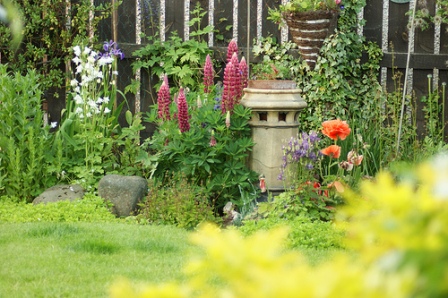
All the elements of this lovely garden space work together to create a rare visual experience.
You’d like to invent a garden space this richly and beautifully formed wouldn’t you?
Then pay attention my friend, I am going to show you how you can do this yourself!
What IS Visual Texture?
Visual Texture in the art world is defined as the arrangement of a series of components or building blocks; relevant to size, shape, form, color, space.
When applied to the garden, visual texture refers to the overall arrangement fashioned through the use of plant forms, fruits, colors, leaf textures and plant placement. Combined with the man-made elements of hardscape and garden ornament, the overall picture formed within a garden space can be described as visual texture.
Referring again to the photo at the top of the page, you can see how the colors, leaf textures, and plant forms, combined with well chosen man-made elements, create an overall picture that has its’ own rich texture, much as a tapestry might excite comment due to its rich embroideries.
The use of texture helps set the mood for a garden space.
We have all seen paintings or photos that we connect emotionally with. A portraiture whose warm, vibrant eyes seem so real as to touch your heart, a smile so winning that it appears fresh and real, though only a painting.
In the garden, there is that same capability.
Understanding texture is the key to establishing those fantastic, sometimes mind blowing garden experiences.
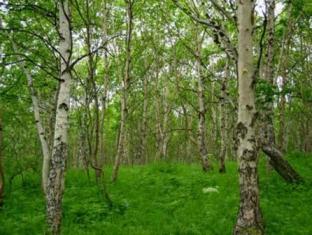
Along with color, texture is an important building block toward creating a mood, or a “sense of place”, as mood is often referred to in the gardening world.
Visual texture is what helps you create a garden which captures the sense of resting on a log in a secluded forest glen, a patio that has an indescribable sense of comfort, or a water feature that transports you to a tropical paradise.
Sound pleasant?
So how do you DO it!?
As with any discipline, in order to master a skill, you must first understand the tools. In the garden, your tools are the plants, hardscape and man-made décor. Once you understand the tools, it is a simple matter to take advantage of them.
Here are your tools!
Plant Form
Plant forms may be spreading, mounding, spiky, trailing or climbing. What a luxuriant palette to work with! Using these forms to offset, accent or reinforce one another creates an interesting garden structure.
Take a look at just a very few of the many plant forms available in the gardening world!

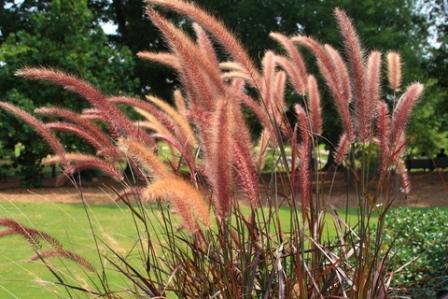
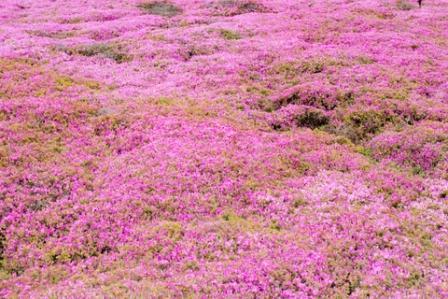
Leaf Texture
Leaves are a world of texture in and of themselves! Oval leaves, heart shaped leaves, linear Leaves and ornamental grasses, smooth, serrated or spiky edged, learn to appreciate the visual power of this varied world and attain garden Nirvana!
Here are just a few of the thousands of examples in nature of leaf textures and forms.
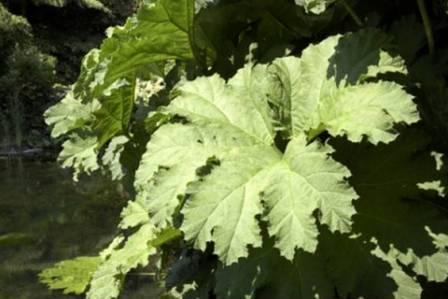
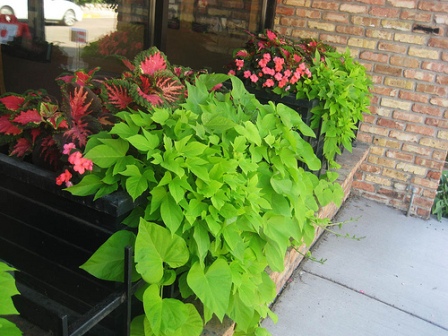
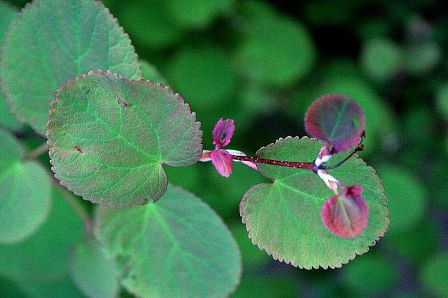
Color Palettes
Colorful gardens gladden the heart. We love color and use it a great deal in order to add interest to our gardens. If you pay close attention to color, you can really up the ante in your landscape. Leaves, flowers, bark, and fruit can all be contributors.
Use them to create patterns, contrast, and variety in your garden. These are your art medium. Get to know the palette well so that you have the tools to design with color at your disposal.
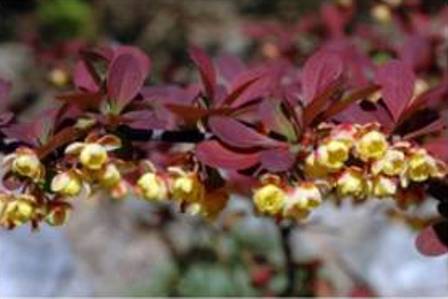
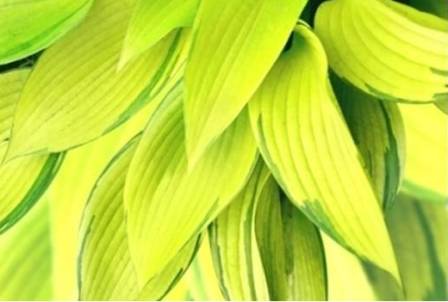
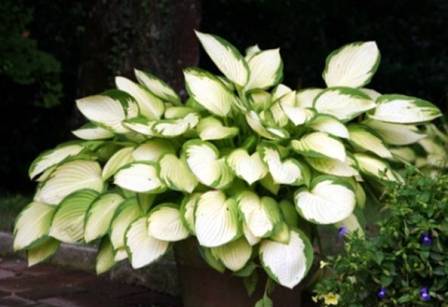
Man-made Objects
What are man-made objects? Patios, containers, sculptures and other hard and soft surfaces we add to our garden spaces are all examples of man-made objects. These have a dramatic impact upon the textural sense created by our garden design. By choosing objects carefully, we can transform a space into a place of the heart. Here are just a few examples!

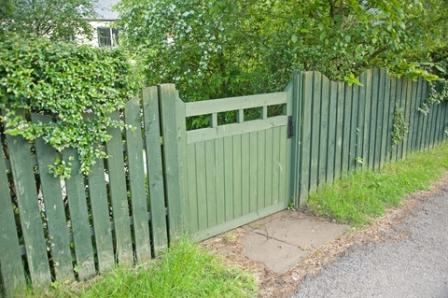
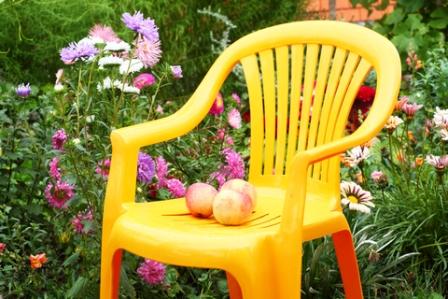
Plant Combinations and Visual Texture
Creating visual texture in your garden is simply a matter of combining leaf texture, plant taxonomy, and color harmonies to create visually pleasing patterns that tickle the senses.
How do we think about our gardens then, as we design to bring out the most pleasing visual textures?
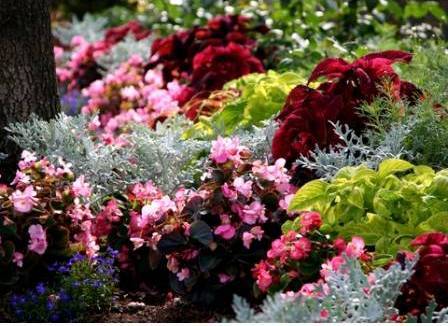
The truth is there is no hard and fast process involved. There are however, a series of small decisions that support the goal of creating a pleasing visual texture.
Create your own sensational garden by keeping in mind some of these guiding tenets.
- Pay attention to plant characteristics such as form, leaf texture, leaf color, and leaf form, and play them off of one another. Contrasting characteristics establish interest.
- Plant for structure first! Visual Textures change throughout the season, and you will want to have a beautiful garden even in the winter.
- Visual opposites are people pleasers. Contrast color, form or texture to attract attention.
- Use softer colors and finer leaf textures to maximize a sense of relaxation and elegance.
- Bolder forms and colors play upon our sense of drama and create a more tropical effect, but use them sparingly!
- Divide a plant combination into thirds, evoking the principle of divine proportion. Plant about 1/3 in bolder or finer textures, colors, or forms, and plant the other 2/3 with visually contrasting combinations or characteristics.
- Plant using the Golden Triangle principle. Place plants in odd numbered groupings for best effect.
- Don’t forget to think about “open” versus “closed” forms. Can you “see through” a plant? You may want to plant it near a visually “closed” plant, again taking advantage of opposite characteristics to create interest.
- Don’t forget to factor in your hardscapes, garden ornaments, or other garden furnishings. They too, help to establish visual texture in ways that cannot be fully accomplished with plantings alone.
- Remember that every decision you make must support your overall goal for the garden space. Do you want a bold, tropical and organic space? Is your goal to create an understated elegance in the space? Ensure that your individual choices support these overall goals.
Whatever you do, DO take advantage of all that nature provides in the way of interesting foliage, fruit and berries, and unusual plant forms, to achieve the jewel box garden you dream of.
Combining carefully chosen plantings with appealing man-made objects will dress up your landscape and give it the over the top ‘WOW’ factor that we all love to enjoy.
I’ll leave you with a quote from Vita Sackville West, English author, poet, and gardener, that I think captures the essence of gardening for visual impact.
“It isn’t that I don’t like sweet disorder,
but it has to be judiciously arranged.”
– Vita Sackville West

